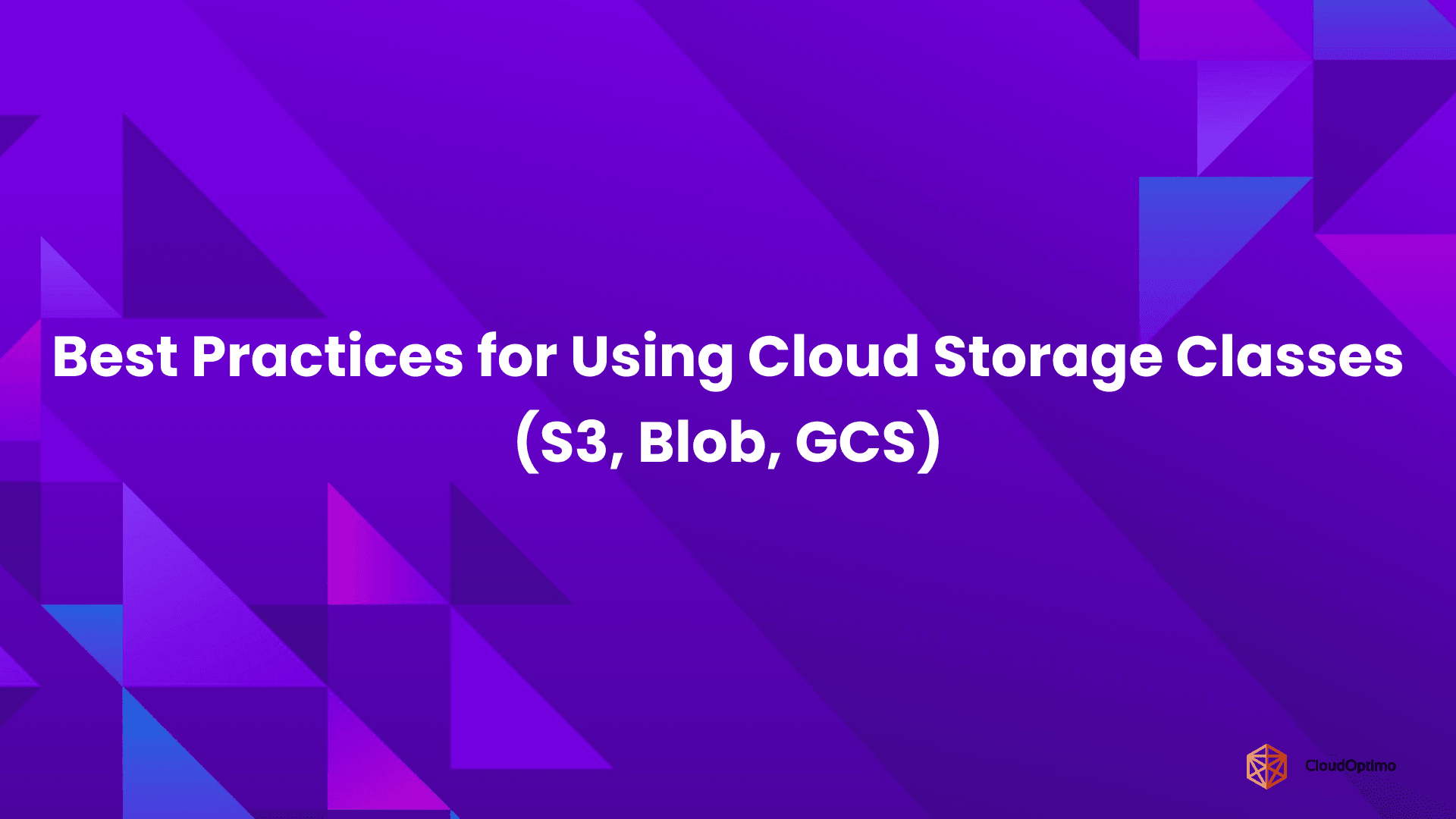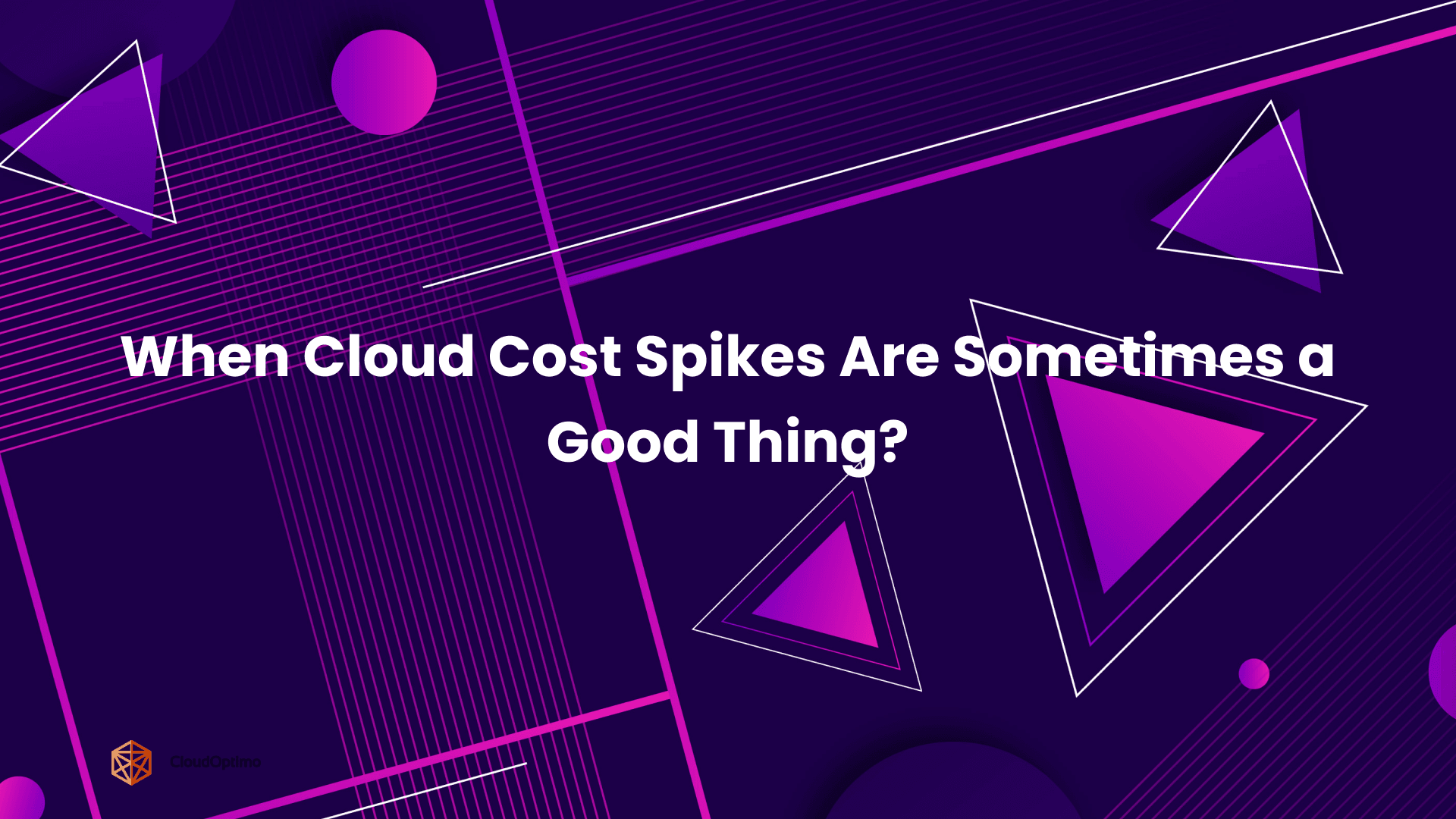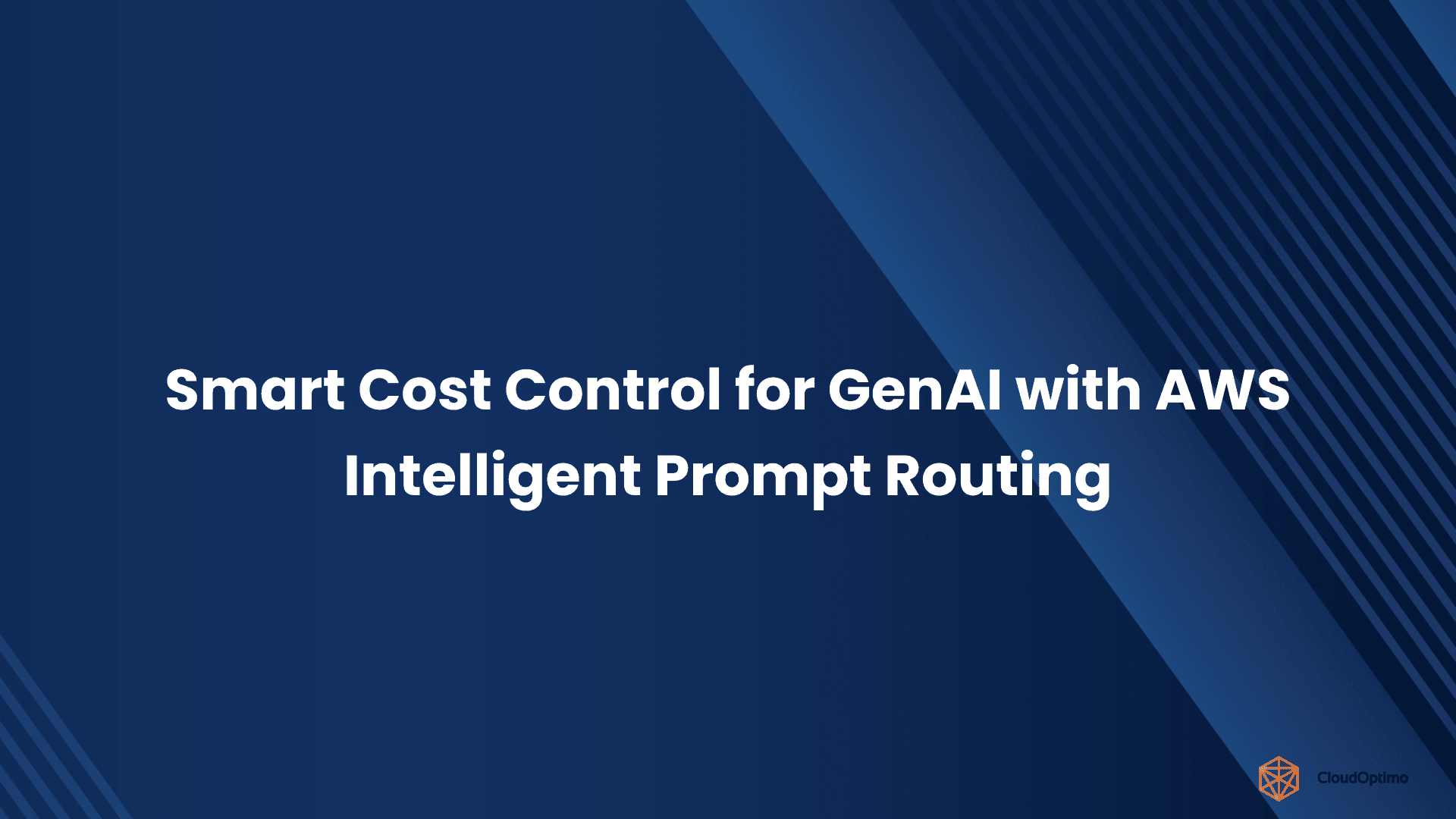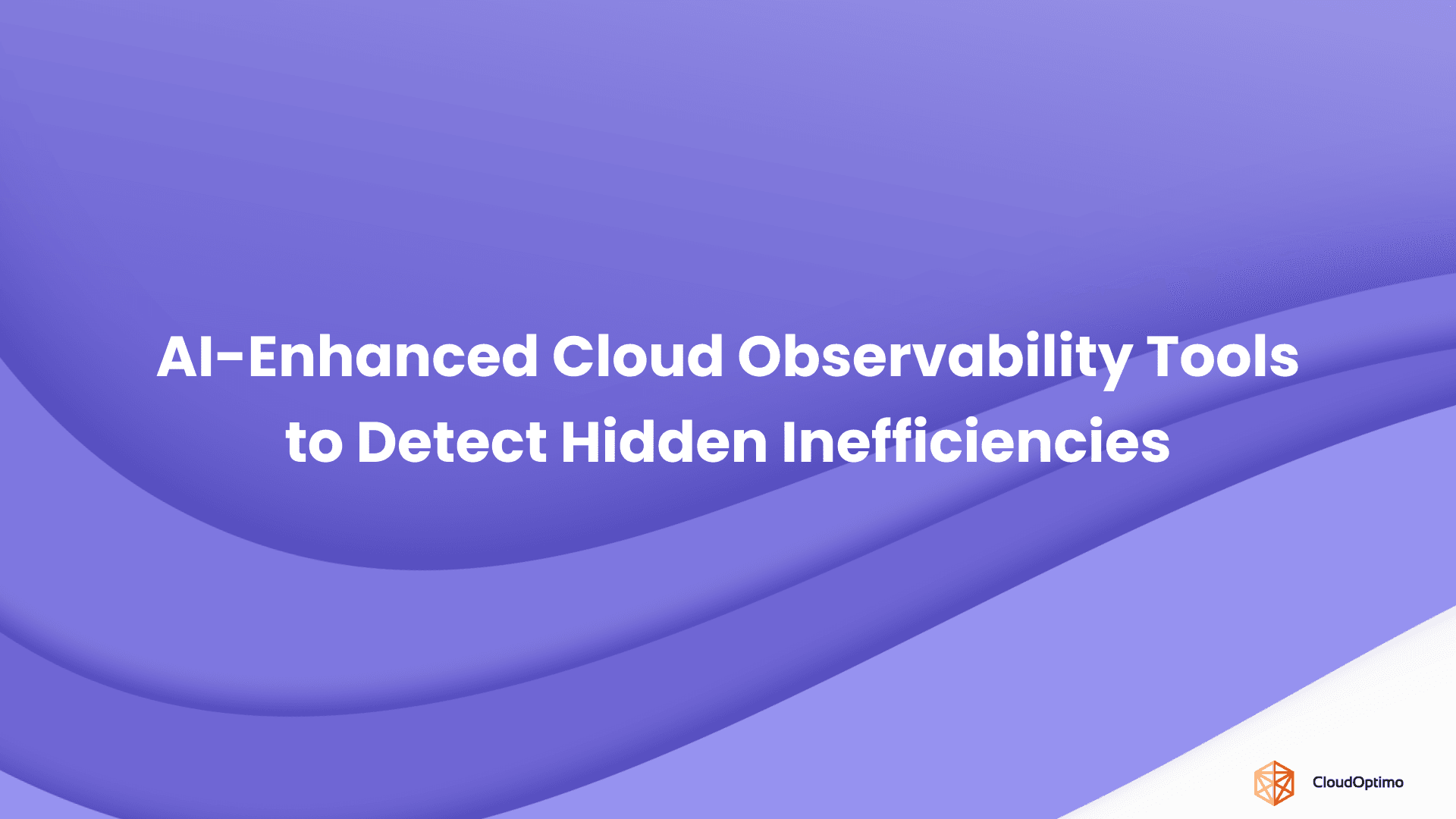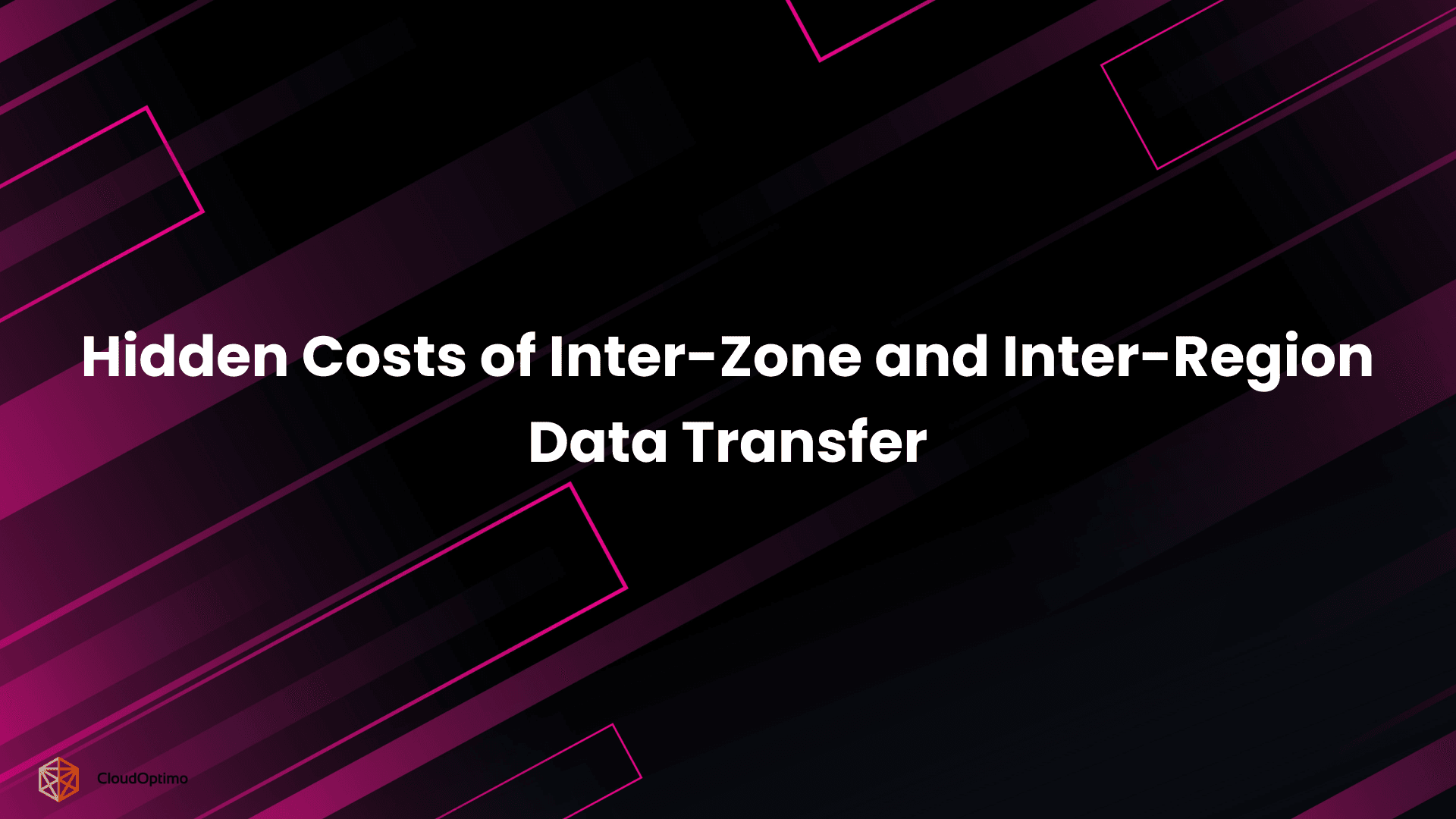The choice of processor architecture can significantly impact cloud computing workloads' performance, cost-efficiency, and overall efficiency. This blog delves into the intricacies of three major players in the processor landscape: AWS Graviton, AMD, and Intel. We will dissect their core architectures, performance benchmarks, and suitability for various workloads to provide a comprehensive understanding of informed decision-making.
Understanding the Architecture
To effectively compare Intel, AMD, and Amazon's Graviton processors, it is crucial to understand the underlying architectural principles that influence their performance characteristics.
x86 architecture
The x86 architecture (AMD and Intel) is a core part of the computer industry. x86 is distinguished by its complex instruction sets. This implies that multiple operations can be carried out by a single instruction, possibly increasing performance but also adding complexity. Over the decades, Intel and AMD have worked to improve this architecture, focusing on various performance metrics.
Arm Architecture
Arm uses a reduced instruction set computing (RISC) methodology, which is a sharp contrast to x86. This results in a single, basic operation being carried out by each instruction, which usually leads to simpler, more efficient designs. Amazon's implementation, Graviton, is scalable and optimized for low-power consumption.
| Feature | x86 Architecture (Intel and AMD) | ARM Architecture (AWS Graviton) |
| Instruction Set Type | Complex Instruction Set Computing (CISC) | Reduced Instruction Set Computing (RISC) |
| Instructions per Clock Cycle | Multiple operations per instruction | Typically one operation per instruction |
| Potential Advantage | Higher performance for certain tasks | Simpler design, potentially lower power consumption |
| Potential Disadvantage | More complex designs can be less efficient | Lower performance for some tasks |
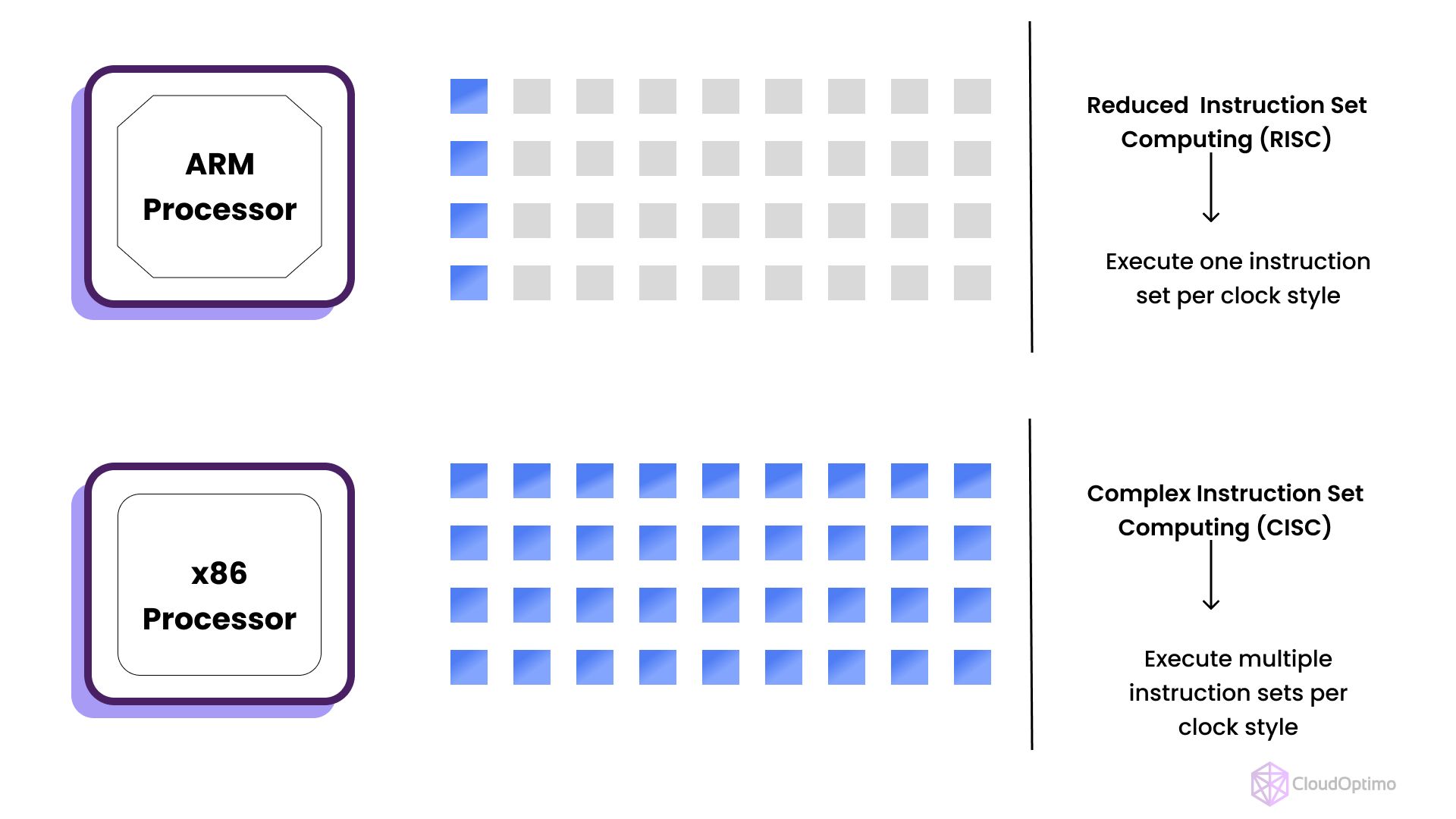
Historical Context and Market Position
Intel
For many years, Intel has been the go-to company for processors, especially for desktops and servers. They're known for their "tick-tock" model, where they alternate between improving the manufacturing process and updating the core design. This strategy has helped them stay on top in both consumer and professional markets.
AMD
Once considered the underdog, AMD has made a remarkable comeback with its Zen architecture. Their Ryzen processors for desktops and EPYC processors for servers allow them to compete effectively with Intel across many different markets.
Graviton
AWS Graviton processors, based on the ARM architecture, challenge x86 dominance in the server market. Designed specifically for cloud workloads, Graviton processors aim to deliver competitive performance with superior energy efficiency.
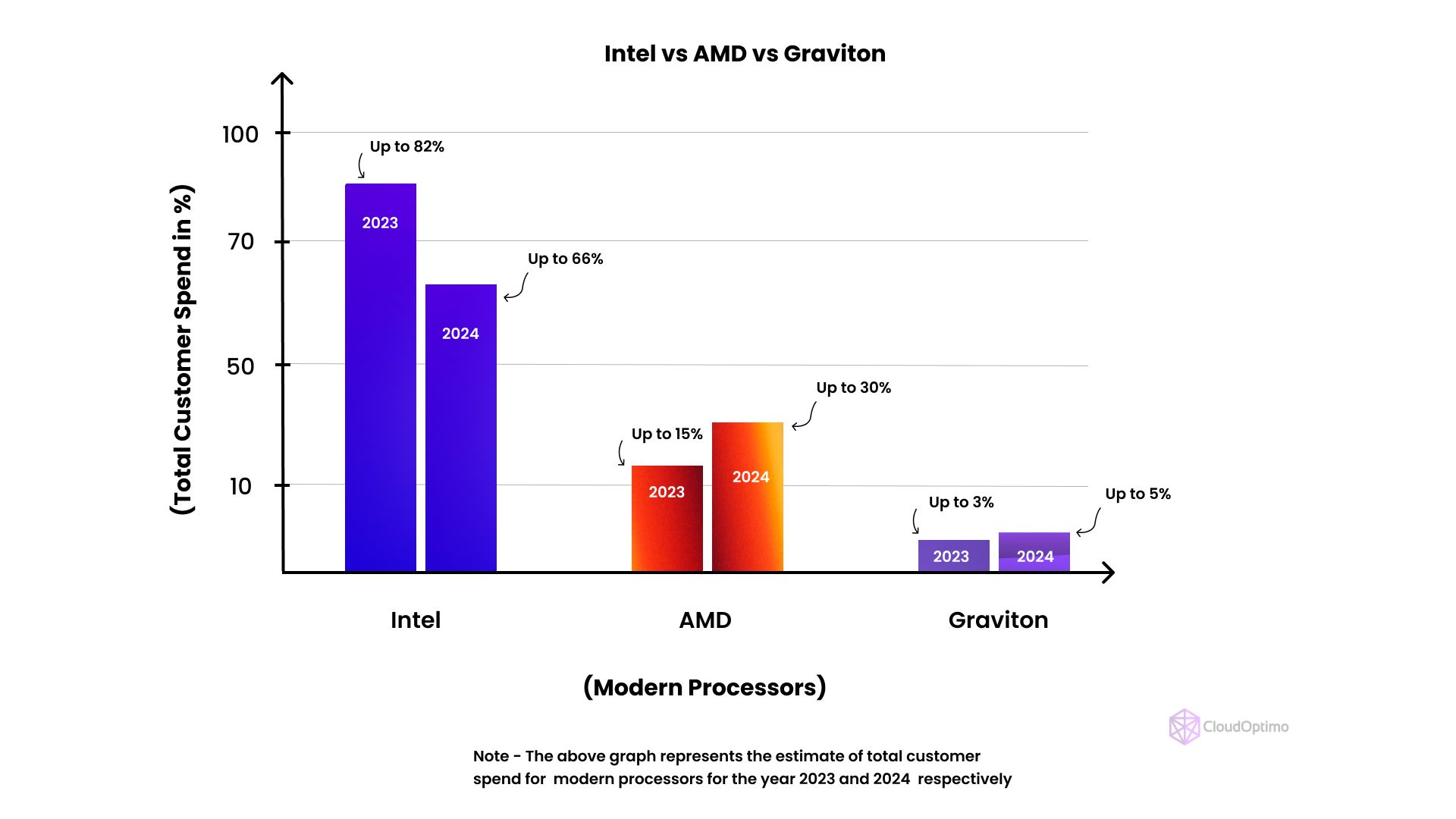
Architecture Overview
Intel Architecture
Current Intel processors are built on various versions of their Core architecture. Here are some key features:
- Recent generations combine high-performance cores with more energy-efficient cores.
- Advanced Vector Extensions (AVX) for handling multiple tasks simultaneously.
- Integrated graphics on many models.
- Support for technologies like Optane memory.
AMD Architecture
AMD's modern processors are based on the Zen architecture, now in its 4th generation. Here's what makes them stand out:
- Chiplet design for better scalability and production efficiency.
- Many cores, even in consumer processors and server products.
- Strong performance in tasks that can use multiple cores at once.
- Integrated graphics on some models (called APUs).
Graviton Architecture
Amazon's Graviton processors use the ARM architecture with custom designs tailored for cloud workloads. Key aspects include:
- Focus on saving energy and reducing costs.
- Designed for large-scale cloud applications that can be easily expanded.
- Custom silicon optimized to work best in Amazon Web Services (AWS) environments.
| Feature | Intel | AMD | Graviton |
| Architecture | x86 (CISC) | x86 (CISC) | ARM (RISC) |
| Market Share (2023 est.) | ~75% Server, ~80% Desktop | ~25% Server, ~20% Desktop | <1% Server (AWS only) |
| Latest Generation | 13th Gen Core (Raptor Lake) | Zen 4 | Graviton 3 |
| Manufacturing Process | Intel 7 (10nm Enhanced SuperFin) | TSMC 5nm | TSMC 5nm |
| Typical TDP Range | 15W - 350W | 15W - 400W | 1W - 100W |
| Feature | Intel | AMD | Graviton |
| AI Acceleration | Intel Deep Learning Boost | AMD EPYC AI Accelerator | AWS Inferentia (separate chip) |
| PCIe Gen Support | PCIe 5.0 | PCIe 5.0 | PCIe 4.0 |
| Max Memory Support | 6TB (Xeon) | 9TB (EPYC) | 512GB |
| Memory Type | DDR5, DDR4 | DDR5, DDR4 | LPDDR5 |
| Instruction Set Extensions | AVX-512, TSX | AVX2, FMA3 | Neoverse V1 extensions |
| Security Features | SGX, TMESEV, SME | SEV, SME | Always-on memory encryption |
Understanding Performance Metrics
When analyzing processor performance, two key concepts are essential:
Single-Threaded Performance
This refers to how quickly a processor can execute a single series of sequential instructions. It's crucial for tasks that can't be easily split into parallel processes, such as many everyday desktop applications and certain gaming scenarios.
Multi-Threaded Performance
This measures a processor's ability to handle multiple tasks or threads simultaneously. It's particularly important for complex workloads that can be parallelized, such as video editing, 3D rendering, and many server-side applications.
The balance between these two aspects is a key factor in processor design, with different architectures prioritizing them to varying degrees based on their target use cases.
Performance Benchmarks
To effectively compare the performance of Intel, AMD, and Graviton processors, it's crucial first to examine available benchmarks and then delve into a detailed comparison across various performance aspects.
- Intel processors have consistently demonstrated strong performance across a broad spectrum of workloads, from enterprise applications to high-performance computing. Their historical dominance has resulted in widespread software optimization for Intel architectures, which can contribute to strong benchmark results in many scenarios.
- AMD has made substantial gains in recent years, offering competitive performance in many areas, particularly in multi-threaded workloads. Their processors often provide an attractive balance of performance and price, making them increasingly popular in both consumer and enterprise markets. Benchmark results frequently show AMD processors excelling in tasks that can leverage their high core counts effectively.
- Graviton processors, while not as widely benchmarked as Intel and AMD offerings, have shown promising results in specific cloud-native workloads. Their strength lies in energy efficiency and performance per watt, making them a compelling option for certain cloud-based applications. Benchmarks often highlight Graviton's efficiency, particularly in scenarios optimized for the AWS ecosystem.
It's important to note that benchmark results can vary significantly based on the specific workload, software stack, and system configuration. When evaluating processors for a particular use case, it's crucial to consider benchmarks that closely align with the intended application and deployment environment.
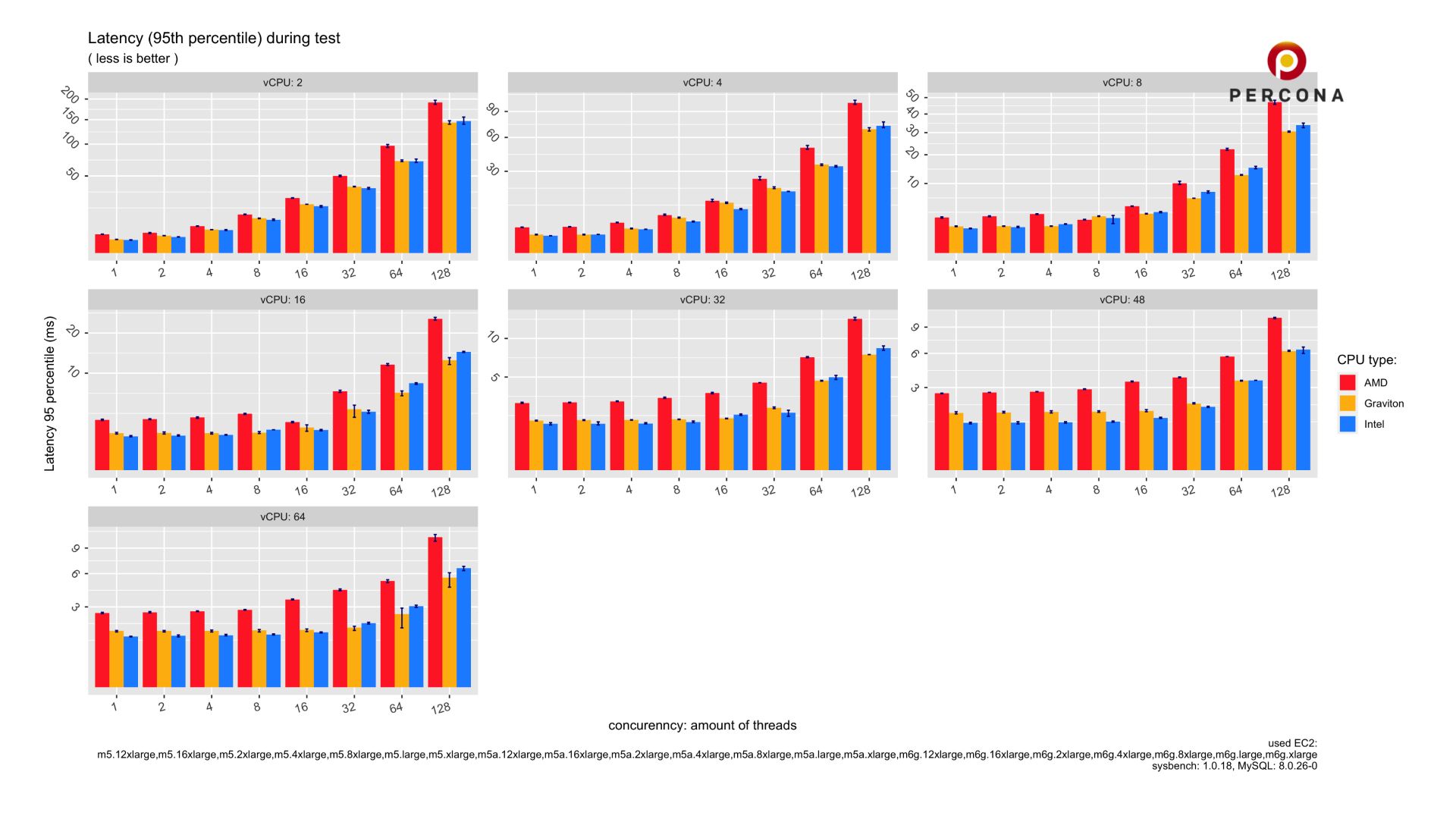 Benchmark source - https://www.percona.com/blog/comparing-graviton-performance-to-arm-and-intel-for-mysql
Benchmark source - https://www.percona.com/blog/comparing-graviton-performance-to-arm-and-intel-for-mysql
Performance Comparison
With these benchmark insights in mind, let's examine how Intel, AMD, and Graviton processors compare across key performance aspects:
- Single-threaded Performance
- AMD and Intel: Both manufacturers have made substantial advancements in single-threaded performance in recent generations. While Intel historically held a dominant position, AMD has narrowed the gap significantly. The competition between the two has led to overall performance improvements for consumers.
- Graviton: Designed primarily for cloud workloads, Graviton processors generally prioritize efficiency over raw single-threaded performance. While capable of handling many single-threaded tasks, they may not match the absolute peak performance of high-end x86 processors.
- Multi-threaded Performance
- AMD's strength in multi-threaded performance stems from its aggressive push towards higher core counts and efficient thread management. This strategy has paid dividends, especially in professional and enterprise environments where parallel processing capabilities are crucial.
- Intel, recognizing the growing importance of multi-threaded performance, has responded with hybrid designs and increased core counts in recent generations. While these efforts have narrowed the gap, AMD still maintains a lead in many multi-threaded scenarios.
- Graviton processors have carved out their own niche in the multi-threaded performance space. They excel in multi-threaded performance for cloud-native applications, often matching or exceeding x86 alternatives in specific AWS-optimized workloads. This performance characteristic makes Graviton an attractive option for certain cloud-based deployments.
Power Efficiency
Power efficiency has become an increasingly important metric, particularly in data center and cloud environments where energy costs can significantly impact the total cost of ownership.
- AMD's Zen architecture has demonstrated impressive power efficiency, often delivering more performance per watt compared to equivalent Intel offerings. This efficiency translates to lower operating costs and improved density in data center environments, making AMD processors an attractive option for large-scale deployments.
- Intel has historically struggled with power efficiency in some of its high-performance parts. However, they have made notable improvements in recent generations, particularly with their hybrid core designs that combine high-performance and high-efficiency cores.
- Graviton processors shine in the power efficiency domain, leveraging the inherent advantages of the ARM architecture. This efficiency makes them particularly attractive for large-scale cloud deployments where energy costs are a significant factor.
Cloud-Specific Performance Metrics
While general performance metrics provide valuable insights, cloud environments have unique requirements. When comparing Graviton, AMD, and Intel in cloud scenarios, consider:
- Instance startup time: Graviton instances often boot faster due to their cloud-optimized design.
- Network throughput: All three offer competitive networking performance, with specific optimizations in their respective cloud platforms.
- Storage I/O performance: Performance can vary based on the storage solution and processor architecture.
Specialized Workloads
- AI and Machine Learning
- Intel: DL Boost for AI acceleration.
- AMD: Support for BFLOAT16 operations.
- Graviton: Often paired with specialized AWS services for acceleration.
- Graphics and Visualization
- Intel: Integrated Xe graphics for casual gaming and basic content creation.
- AMD: APUs with integrated Radeon graphics often outperform Intel's integrated solutions.
- Graviton: No integrated graphics, primarily designed for server workloads.
- High-Performance Computing (HPC)
- Intel: Strong presence with AVX-512 instructions for vector processing.
- AMD: EPYC processors offer high core counts and memory bandwidth for scientific computing.
- Graviton: Shows promise in cloud-based HPC, especially for cost-efficiency.
| Processor Family | Unique Instructions | Primary Use Cases | Potential Performance Impact |
| Intel | AVX-512, TSX, SGX | HPC, Cryptography, Secure Enclaves | Up to 2x for specific workloads |
| AMD | SME, SEV, SNP | VM Security, Confidential Computing | Enhanced security with minimal overhead |
| Graviton | SVE, BFloat16 | Machine Learning, Vector Processing | Up to 3x for AI inference tasks |
Ecosystem and Software Compatibility
- x86 Ecosystem (Intel and AMD)
- Vast ecosystem of software and hardware compatibility.
- Most applications and operating systems are designed for x86.
- ARM Ecosystem (Graviton)
- Growing rapidly but still faces challenges with legacy applications.
- Strong compatibility with cloud-native applications and modern software stacks.
Migration Considerations
When considering a switch between processor architectures:
- x86 to x86 (Intel to AMD or vice versa): Generally straightforward, with minimal code changes required.
- x86 to ARM (Intel/AMD to Graviton): May require recompilation of code and testing for compatibility.
Consider tools and services provided by cloud providers to ease migration processes.
Cost Considerations
- Hardware Costs
- AMD: AMD processors often deliver competitive performance at lower price points compared to equivalent Intel offerings. This strategy has been effective in the consumer market and cost-conscious enterprise customers.
- Intel: Historically, Intel commanded a premium price for its processors due to its strong market position and perceived performance advantages. However, increased competition has forced Intel to adopt more aggressive pricing strategies in recent years.
- Graviton: As a part of Amazon's cloud services (AWS EC2 instances), Graviton processors are not sold as standalone products. The pricing of these instances is competitive compared to x86-based alternatives, offering significant cost savings for compatible workloads.
Total Cost of Ownership (TCO)
TCO encompasses a broader spectrum of costs beyond the initial hardware purchase. Key factors influencing TCO include:
- Power Efficiency: Processors with lower power consumption translate to reduced electricity bills over time. AMD and Graviton processors often exhibit superior power efficiency compared to their Intel counterparts.
- Cooling Requirements: Processors with lower power consumption typically generate less heat, reducing the need for expensive cooling systems. This is another area where AMD and Graviton can offer advantages.
- Software Licensing: Some software applications are licensed based on the number of processor cores. In such cases, processors with higher core counts (like those from AMD) can potentially increase software licensing costs.
- Performance per Dollar: The ability to accomplish tasks efficiently with fewer, more powerful processors can lead to overall cost savings. This is a factor to consider when comparing processors across different price points and performance levels.
Future Outlook and Innovations
- Intel: The company is focused on regaining its competitive edge through several strategic initiatives:
- Hybrid Core Designs: Combining high-performance and energy-efficient cores to optimize performance across various workloads.
- Advanced Process Technology: Continuously improving chip manufacturing processes to enhance transistor density and energy efficiency.
- Specialized Accelerators: Integrating dedicated hardware components for AI, graphics, and other demanding tasks.
- AMD: Building upon the success of its Zen architecture, AMD is pursuing several growth avenues:
- Zen Architecture Refinements: Further enhancing the performance and efficiency of its core processor design.
- Market Expansion: Targeting new market segments, such as mobile and embedded systems.
- Technology Integration: Leveraging acquired technologies, like FPGA capabilities from Xilinx, to expand its product portfolio.
- Graviton: Amazon is expected to continue investing in the development of Graviton processors:
- Performance and Efficiency Improvements: Delivering subsequent generations of Graviton processors with enhanced performance and power efficiency.
- Expanded AWS Integration: Integrating Graviton processors more deeply into AWS services for optimized performance and cost-effectiveness.
- Potential Market Expansion: Exploring opportunities to license Graviton technology to other cloud providers or hardware manufacturers.
The choice between Graviton, AMD, and Intel is not a one-size-fits-all decision. Careful consideration of workload characteristics, performance requirements, cost constraints, and the broader ecosystem is essential. As the processor landscape continues to evolve, it's crucial to stay updated on the latest benchmarks and performance metrics to make informed decisions.
FAQs
Q: What are the cost considerations when choosing between these processor families?
A: AMD often offers competitive performance at lower price points. Intel has traditionally commanded premium prices but has become more competitive. Graviton instances in AWS can offer significant cost savings for compatible workloads.
Q: What are the main considerations when migrating between processor architectures?
A: Migrating between x86 processors (Intel to AMD or vice versa) is generally straightforward. Moving from x86 to ARM (Graviton) may require code recompilation and compatibility testing.
Q: How does software compatibility differ between x86 and ARM processors?
A: x86 processors have a vast ecosystem of compatible software and operating systems. ARM processors, like Graviton, have growing compatibility but may face challenges with legacy applications.
Q: How do instance startup times compare between Graviton, AMD, and Intel processors in cloud environments?
A: Instance startup times can vary between processor types. For a detailed comparison, check out our upcoming blog post on "Cloud Instance Performance Metrics"
Q: How do these processors compare in terms of scalability for large cloud deployments?
A: Scalability is a crucial factor in cloud computing. Look out for our in-depth exploration in the upcoming post "Processor Scalability in Massive Cloud Deployments"

